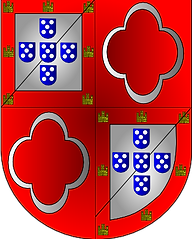The name 'Soysa'
The original Portuguese spelling of the name is 'Sousa'. Interestingly, the Portuguese pronounce their 'u' as 'i/y'. Therefore, the correct English spelling is 'Soysa'. In fact, the Thombo record of the marriage between Samuel de Mello and Dominga de Soisa of Panadura in 1691 had used the Dutch spelling.
Meaning of Sousa
It is thought that 'Sousa' derives from the Sousa river of the Porto District located on the north-west coast of Portugal (deriving from Latin Saxa 'rocks') or from salt marsh, from a variant of 'sausa', salty (from the Latin 'salsa').
The House of Sousa
A prominent noble house of Portugal, established before the founding of the Kingdom of Portugal. Gonçalo Mendes de Sousa the Good (1120–1190), a veteran of the Battle of Ourique, which created the Kingdom of Portugal in 1139 was the brother-in-law of Afonso I, King of Portugal. Many members of this family who were related to the Portuguese Crown were employed as Governors in Portuguese overseas colonies. For instance, the fist Governors of the largest colony Brazil were Martim Afonso de Sousa and Tomé de Sousa. In Ceilão (a corruption of 'Sihela/Sinhale') as the Island was known to them, the very capable Captain-major was overlooked in preference to the noble Pedro Lopez de Sousa as the first Governor. A famous descendant of this family was Queen Charlotte, the wife of King George III of the United Kingdom of Great Britain and Ireland. Of the eleven hereditary noble Dukedoms of Portugal, four were de Sousa and three of them were among the six dukedoms de juro e herdade - this meant that the King was obliged to renew the title in its rightful heir.
Read more about the the house of Sousa....

Shield of the
House of Sousa,
circa 10th century.
A quartet of silver crescents (Argent) over a field of red (Gules),

Shield of the Kingdom of Portugal (1139-1247)
The five wounds of Christ are symbolized by the five shields on Portugal's coat of arms

Shield of the
House of Sousa,
circa 1139
The field of the shield is divided in four quarters with the royal arms of Portugal in the first and fourth quarters, and the arms of Sousa, in the second and third quarters.

Shield of the Kingdom of Portugal
(13th century onward)
Coat of Arms -
Sousa of Arronches,
13th century
This grouping is known as the Sousa of Arronches (because of the title of Lords of Arronches). It is still borne by many of the noble houses of Portugal, like the Dukes of Lafões and the Dukes of Palmela.
